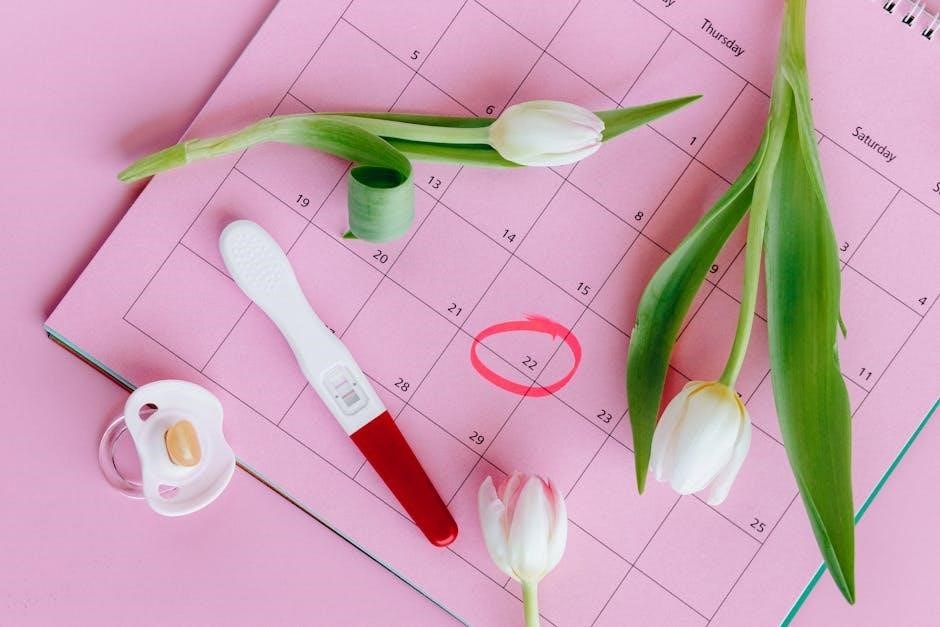Intro B Dressage Test: An Overview
Intro B Dressage Test is designed for novice horse and rider combinations․ It introduces elementary skills, promoting correct performance and preparation for higher-level USEF tests․ Diagrams aid understanding of required movements and arena layout․
Purpose and Target Audience
The Intro B Dressage Test serves as an entry point into the world of dressage for both horse and rider․ Its primary purpose is to introduce fundamental dressage principles and movements in a supportive and educational environment․ It is specifically designed for riders and horses new to the discipline, providing a stepping stone towards more advanced tests․ The target audience includes beginner riders, young horses starting their dressage journey, and riders transitioning from other equestrian disciplines․ The test focuses on basic gaits, transitions, and figures, emphasizing correct performance and laying a solid foundation for future progress in dressage․
Understanding the Test Format
The Intro B Dressage Test follows a specific structure, outlining required movements in a particular sequence․ Familiarity with the test format is crucial for effective preparation and successful execution in the arena, ensuring a smooth and accurate performance․
Arena Size and Letter Placement
The Intro B Dressage Test is typically performed in a small arena, measuring 20 meters by 40 meters, though a standard arena may also be used․ Accurate arena dimensions are essential for precise execution of movements․ Letter placement around the arena’s perimeter serves as crucial markers, guiding riders to perform specific transitions and figures at designated points․ These letters, such as A, B, C, E, and K, are reference points for circles, turns, and changes of direction․ Riders must memorize the arena layout and letter positions to navigate the test accurately․ Familiarity with this will lead to a better score․
Required Gaits: Walk and Trot
The Intro B Dressage Test primarily focuses on two fundamental gaits: the walk and the trot․ The walk includes medium and free variations, showcasing the horse’s relaxation and rhythm․ The trot work is performed rising, emphasizing balance and forward movement․ Transitions between these gaits are a key element, requiring smoothness and clear communication from the rider․ Judges evaluate the quality of each gait, considering factors like regularity, impulsion, and the horse’s overall way of going․ Mastery of the walk and trot is essential for success in this introductory level, building a strong foundation for future dressage endeavors․ Proper training and attention to detail are needed․
Movements in Intro B Dressage Test
The Intro B test includes entering at trot, halting, circles, and turns․ Transitions between gaits, like walk and trot, are crucial․ These movements assess the horse’s basic training and the rider’s ability to communicate effectively and accurately․
Entering and Halting
Entering the arena in a working trot marks the beginning of the Intro B Dressage Test․ The entry should be smooth and confident, setting a positive tone for the rest of the test․ At X, a transition to medium walk, followed by a halt and salute, demonstrates obedience and balance; The halt must be square, with the horse standing still and attentive․ Precision in the halt and salute is essential, showcasing the rider’s control and the horse’s responsiveness․ This initial impression is crucial for a good overall score, reflecting discipline and harmony between horse and rider․
Circles and Turns
Circles and turns are integral components of the Intro B Dressage Test, evaluating the horse’s suppleness and the rider’s ability to maintain balance and rhythm․ Typically, the test includes 20-meter circles, requiring the horse to bend smoothly and evenly throughout the movement․ Turns, such as turning left or right at specific letters, assess the rider’s precision and the horse’s responsiveness to the aids․ Accurate geometry and consistent pace are crucial for scoring well in these elements․ Riders should focus on maintaining a steady contact and using their body weight to guide the horse through the required shapes, demonstrating control and harmony․
Transitions Between Gaits
Smooth and balanced transitions between gaits are a fundamental aspect of the Intro B Dressage Test․ These transitions, typically between walk and trot, demonstrate the horse’s responsiveness to the rider’s cues and the rider’s ability to maintain control․ Effective transitions should be prompt, with the horse willingly changing gait without resistance or loss of balance․ Judges look for clear and defined changes, where the horse maintains rhythm and cadence throughout the movement․ The rider’s aids should be subtle yet effective, creating a seamless transition that showcases the horse’s training and the harmony between horse and rider․ Fluency and throughness are key elements in scoring well․

Key Elements of Judging
Judging in Intro B emphasizes accuracy, rhythm, balance, and submission․ The judge assesses the horse’s willingness and ease of movement․ Harmony between horse and rider is a key component for a successful test․
Accuracy and Precision
In Intro B Dressage, accuracy and precision are crucial for scoring well․ Riders should demonstrate exactness in performing movements at designated points within the arena․ This includes accurate circles, straight lines, and precise transitions between gaits․ Judges look for the rider’s ability to follow the test pattern accurately, maintaining the correct track and using the arena effectively․ Deviations from the prescribed path or imprecise execution of movements will result in deductions․ Attention to detail and careful planning are essential for achieving high marks in accuracy and precision․ Practicing transitions and movements with focus enhances performance․
Rhythm and Balance
Rhythm and balance are fundamental elements assessed in the Intro B Dressage Test․ Rhythm refers to the regularity and cadence of the horse’s gaits, ensuring consistent footfalls in walk and trot․ Balance describes the horse’s ability to maintain equilibrium and self-carriage throughout the test․ Judges evaluate the horse’s natural rhythm and balance, as well as the rider’s ability to influence and maintain these qualities․ A horse with good rhythm and balance appears comfortable and harmonious in its movements․ Riders can improve these aspects through training exercises that promote suppleness, engagement, and proper posture․ Consistent practice is key to developing a horse’s rhythm and balance․
Submission and Harmony
Submission and harmony are crucial aspects evaluated in Intro B Dressage Tests, reflecting the horse’s willingness to cooperate with the rider and the partnership’s overall unity․ Submission doesn’t imply force, but rather a willing and relaxed attitude where the horse accepts the rider’s aids without resistance․ Harmony signifies a seamless connection between horse and rider, evident in smooth transitions, balanced movements, and a shared understanding․ Judges assess the horse’s responsiveness, attentiveness, and acceptance of the bit, as well as the rider’s ability to communicate clearly and sensitively․ A harmonious partnership is characterized by effortless communication and a mutual willingness to perform the required movements․ Achieving submission and harmony requires patience, consistent training, and a focus on building a trusting relationship with the horse․

Resources for Test Preparation
To effectively prepare for the Intro B Dressage Test, utilize official diagrams and call sheets․ Supplement these with training tips and exercises that focus on accuracy, rhythm, and harmony․
Official Test Diagrams and Call Sheets (PDF)
Accessing official diagrams and call sheets in PDF format is crucial for effective Intro B Dressage Test preparation․ These resources provide a visual representation of the test, illustrating the precise location of each movement within the arena, including letter placements and transitions․ Call sheets offer a written guide, outlining the sequence of movements and commands․ These diagrams are readily available for personal, non-commercial use․ Sharing with friends, students, and trainers is allowed, fostering a collaborative approach to learning and improving dressage skills․ Utilizing these PDF resources will greatly enhance understanding and performance in the Intro B Test․
Training Tips and Exercises
Effective training for the Intro B Dressage Test involves focused exercises that enhance the horse’s balance, rhythm, and responsiveness․ Practice transitions between gaits, particularly walk and trot, ensuring fluency and precision․ Incorporate circle work to improve suppleness and control, paying close attention to maintaining consistent size and shape․ Regular sessions should also focus on achieving balanced halts․ Exercises like riding serpentines and figure eights can aid in developing the horse’s understanding of bending and straightness․ Remember to use positive reinforcement techniques to build confidence and encourage willing submission from the horse․ Consistent and patient training is the key to success․

British Dressage (BD) and USDF Versions
While both British Dressage (BD) and USDF offer introductory tests, they differ in specific requirements and judging criteria․ Understanding these nuances is crucial for riders competing under either federation’s rules․
Differences and Similarities
Both the British Dressage (BD) and United States Dressage Federation (USDF) versions of Intro B tests aim to introduce riders and horses to basic dressage principles․ However, key differences exist in test layouts, specific movement requirements, and judging emphasis․ BD tests might prioritize fluency and transitions, while USDF tests may focus more on accuracy and rider position․
Similarities include the incorporation of walk and trot gaits, basic figures like circles and turns, and the evaluation of harmony and submission․ Riders should consult official test sheets and diagrams for the most accurate and up-to-date information relevant to their chosen federation․ Understanding both versions can broaden a rider’s understanding of foundational dressage․

New BD Test Updates (2024 onwards)
British Dressage (BD) introduced new test updates starting July 1, 2024․ These updates impact all levels, including the Introductory tests like Intro B․ Changes may involve revised test patterns, updated judging criteria, and a greater emphasis on specific aspects of performance․ Riders are advised to consult the new BD test diagrams and call sheets available online and at BD events like the NAF Five Star Winter Championships․
The updated tests aim to enhance the educational value of dressage and promote correct training principles․ Riders should familiarize themselves with the changes to ensure they are prepared for competitions․ Visual learning is supported by the diagrammatic versions of the new tests․